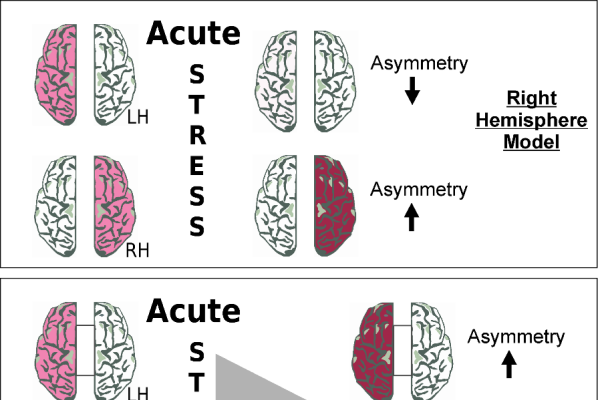2016-10-01

Functional hemispheric asymmetries can vary over time and steroid hormones have been shown to be one of the factors that can modulate them. Research into this matter has mainly focused on sex steroid hormones, but evidence is accumulating that stress steroid hormones might also affect asymmetries. In a newly published article, a team of researchers from the Biopsychology and Cognitive psychology labs at Ruhr-University, as well as from the University of Muenster and Utrecht University now analyzed studies in humans and animal species investigating the relation of stress and laterality. Results indicate a dual relationship of the two parameters. Both acute and chronic stress can affect different forms of lateralization in the human brain, often (but not always) resulting in greater involvement of the right hemisphere. Moreover, lateralization as a form of functional brain architecture can also represent a protective factor against adverse effects of stress. We hope that this article will stimulate further research on stress and laterality.

Functional hemispheric asymmetries can vary over time and steroid hormones have been shown to be one of the factors that can modulate them. Research into this matter has mainly focused on sex steroid hormones, but evidence is accumulating that stress steroid hormones might also affect asymmetries. In a newly published article, a team of researchers from the Biopsychology and Cognitive psychology labs at Ruhr-University, as well as from the University of Muenster and Utrecht University now analyzed studies in humans and animal species investigating the relation of stress and laterality. Results indicate a dual relationship of the two parameters. Both acute and chronic stress can affect different forms of lateralization in the human brain, often (but not always) resulting in greater involvement of the right hemisphere. Moreover, lateralization as a form of functional brain architecture can also represent a protective factor against adverse effects of stress. We hope that this article will stimulate further research on stress and laterality.